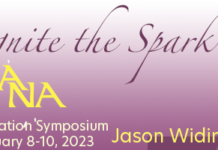By Leader Contributor Alexandra Jo, Culture and Content Manager at Parting Stone
The myth that cremations have to be cheap and that cremation families don’t want other services has only begun being debunked in recent years.
According to many funeral care experts, our profession has been self-defeating in assumptions around what cremation families are looking for, and we have played a huge role in devaluing cremation for ourselves. However, we are beginning to see a much-needed shift in the way our profession thinks about, talks about, and sells cremation services to families. Our own preconceived notions about the services we offer directly affect how lucrative those services are.
It turns out that having more descriptive and appealing language for different types of cremation services that are consistent across the profession could be beneficial in helping the next generation of death planners value cremation more.
How It’s Always Been
Funeral professionals have assumed that cremation families are only looking for a cheap alternative to burial for decades. Unfortunately, this has led to a self-fulfilling prophecy in which many families think that cremation does not cost much and that there are no services that can go along with it. In essence, as a profession, we have devalued our own services, which is why death planners often aren’t willing to pay more for cremation.
According to this article from Air Call, “A customer buys a product for the perceived benefit he will gain from it. This perceived benefit, in addition to his opinion of the product, is what creates customer perceived value […] Perceived product benefits exist on three levels: physical, logical, emotional. For example, buying a new suit will help you stay warm (physical), land the new job for which you are interviewing (logical), and save you from the embarrassment of walking around naked (emotional). Perceived costs include money, time, and labor. When comparing the difference between perceived benefit and perceived cost, if the difference is positive, customer perceived value is high, meaning customers will buy a product or service.”
Since much of our profession’s cremation marketing philosophy has been focused on competing on price in the past few decades, cremation has automatically been perceived by families as fast and cheap, not as an investment with inherent value. This has left space for helping families better understand the logical and emotional values that cremation services can offer. Direct cremation is common because that’s what we usually offer first, making assumptions that cremation families are looking for a cheap option, not elaborate services. In essence, by remaining unaware of perceived value and how to build that in our customers, we’ve under-sold ourselves.
Defining “Traditional Cremation”
Maggie McMillan, Vice President of Wiefels Group and All Caring, has incorporated nuanced terminology into how she communicates with cremation families. This clear, definitive language helps instill perceived value around cremation services and educates families on the plethora of options that are available with cremation today. Maggie distinguishes between “direct cremation” and what she calls “traditional cremation” when talking with families. Using this nuanced terminology has helped Maggie and her business.
She explains, “The reason we use the term traditional cremation is to distinguish a cremation with a service from a simple, direct cremation. We’ve found a lot of families associate cremation with a direct disposition and don’t realize that the broad spectrum of service offerings still applies. The intended effect is to start a dialogue with the family in a non-threatening way. Sometimes a family thinks they’re walking into a sales pitch and making that distinction is a great conversation starter for a family who maybe wants a little more than a direct cremation, but not a full traditional cremation with an embalmed body.”
According to Maggie’s definition, a “traditional cremation” is when a family chooses to have services like embalming, in-casket memorial services, visitations, and other options for the funeral ceremony, with cremation being the final disposition option which happens afterward. In traditional cremation, the cremation itself is sometimes witnessed. Maggie also uses the term “traditional cremation” to encompass cremation dispositions that include other services, products (like Eterneva, Parting Stone, etc.), and any other option above and beyond direct cremation. “Direct cremation” becomes a term specifically describing cremation only. In this sense, traditional cremation stands to be more lucrative for funeral businesses and more meaningful to cremation families.
Though Maggie doesn’t remember where she first heard the term “traditional cremation,” it’s been instrumental in communicating different options to cremation families at her business. Simply by adding a category called “traditional cremation” to compare against “direct cremation,” the family begins to understand a fuller scope of their arrangement options. Building this terminology into the vernacular of your funeral directors, adding it to your marketing assets, and including it on your authorization can help educate families. The gains that funeral businesses stand to make from this simple shift in how we think about, talk about, and sell cremation are gargantuan.
Terminology Successfully Shapes Perceived Value
Other funeral businesses are already seeing success when using intentional terminology to shape perceived value in the services they sell along with cremation. Funeral directors like John Perkes at Regency Mortuary are using subtle terminology shifts to position new technologies in the industry, like solidified remains from Parting Stone. When Regency Mortuary offers solidified remains to a family, John and his staff position this as an either-or option: “cremated remains or solidified remains?” Families are shown a display that contains both a jar of traditional granular cremains and samples of solidified remains’ “stones,” so they are empowered to make educated decisions about their cremation experience through clear terminology and concrete examples.
A letter from a happy family who chose solidified remains demonstrates the power of educating through terminology:
“We were given the choice of either ashes or solidified remains at Regency Mortuary in Sun City, AZ, when our oldest son died tragically over last Thanksgiving weekend. Saving someone’s ashes was something I never thought I would do, but the stones are different. We carried some of them to a stream behind his home in Valdez, Alaska, and I’m sure you can still see them in the bottom of the stream where the salmon spawn. Next month, his father will hike up near Humphreys Peak in Flagstaff and leave many of the stones in the place where he loved to hike and camp. I have also given a bag to his brother and two small bags to his best friends, and I carry a very small bag in my purse. It is so very sad, but it keeps his memory close to me always. Thank you for giving us this small bit of comfort and the memories. — Kris and Ron K.“
To learn more about Parting Stone and how offering solidified remains can help empower your families and grow your business, sign up for Parting Stone’s monthly webinar here.
Terminology’s Long-Term Effects on Deathcare
Equipping ourselves with terminology that inherently creates value in the services we provide will help our businesses and the profession as a whole. It’s unclear whether the consumer or the profession coined the term “direct cremation,” but it’s clear that it is not helping anyone. The more awareness we have around how we perceive our own services and how those services are presented to families, the more we can hone in on meeting the needs of those families while growing our businesses amidst skyrocketing cremation rates.
To learn more about the wide range of expansive options and experiences that are available to contemporary cremation families, click below to download a free ebook about Contemporary Cremation Rituals.








